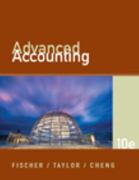Question
1. The following statement that best describes corporate governance with respect to fraud is ? A.Auditors are primarily responsible for the detection of fraud, the
1. The following statement that best describes corporate governance with respect to fraud is ?
A.Auditors are primarily responsible for the detection of fraud, the Board of Directors for the deterrence of fraud and management for the prevention of fraud.
B.An auditor is primarily responsible for the detection, prevention and deterrence of fraud acts at the organization under audit.
C.The corporate governance fabric includes management, internal and external auditors but excludes the Board of Directors because executive management reports to the Board.
D.Management is primarily responsible for adopting sound accounting policies and ensuring the fair presentation of financial performance, results of operations and the financial condition of the company.
2. Which of the following is not considered a red flag (indicator) of fraud?
A.Accounting anomalies.
B.Analytical inconsistencies.
C.Nonfinancial numbers.
D.Behavioral anomalies.
3. Which of the following statements is most accurate with regard to red flags for fraud?
A.Red flags are compelling indicators that fraud has occurred.
B.The investigation and resolution of red flags is the final step in the audit process.
C.Financial performance deviations from budgeted numbers should always be a cause for alarm and suggest the need for a fraud investigation.
D.Most red flags are explainable anomalies and are not, after subsequent investigation, indicators of fraud.
4.Which of the following is not an inherent part of Statement on Auditing Standards, No. 99 / 113?
A.Greater scrutiny of the chief executive and chief financial officers personal financial condition.
B.Enhanced professional skepticism.
C.Emphasis on pre-audit discussions such as brainstorming.
D.Emphasis on interviews with key personnel throughout the organization, including supervisors, managers, and executives.
5.Select the statement that is most precise with regard to materiality.
A.Materiality does not create discretionary choices for managers, executives and auditors.
B.Earnings management is not sufficiently material to constitute fraud.
C.Materiality is based on a percentage of net sales.
D.Materiality includes both quantitative and qualitative factors.
6.Which of the following statement is not a reason that the prevention and detection of fraud resulting from management override and collusion presents a significant challenge for the anti-fraud community?
A.Internal controls are generally designed to prevent a single fraudster acting alone.
B.Internal controls are best at assisting in the detection of fraud acts arising from collusion and management override.
C.The Board of Directors maintains little direct supervisory oversight of executive operational actions and decisions.
D.Collusive and executive perpetrators tend to be better prepared to deal with oversight mechanisms such as internal and external auditors.
7.Considering the targeted fraud risk assessment process, which of the following is most accurate?
A.The targeted fraud risk assessment process is centered on the likelihood (probability) and magnitude (dollar value) that fraud will occur.
B.The targeted fraud risk assessment process is centered on the likelihood (probability) and magnitude (dollar value) that fraud has occurred.
C.The targeted fraud risk assessment process is centered on the likelihood (probability) and magnitude (dollar value) that fraud has not occurred.
D.The targeted fraud risk assessment process is centered on the likelihood (probability) and magnitude (dollar value) that fraud may occur.
8.Which of the following is not considered a reason for the incorporation of nonfinancial numbers in fraud detection efforts?
A.Nonfinancial numbers have little use in fraud detection because it is financial numbers that have been manipulated.
B.Management wants operations to run smoothly and many operational decisions are dependent on the accuracy and integrity of nonfinancial information.
C.Nonfinancial numbers are often generated outside the accounting and reporting system and thus may not be subject to the same types of manipulations found with fraudulent accounting numbers.
D.Nonfinancial data should correlated with or reconciled to financial data.
9.Which of the following is not a step in the targeted fraud risk assessment process?
A.Identify the parties who have the ability to commit the potential fraud.
B.Place the parties who most likely committed the potential fraud under arrest to illicit a confession.
C.Identify, understand and evaluate the company's operating environment and the pressures that exist.
D.Review past fraud experience within the company for the process being evaluated.
10.According to the ACFE 2016 Report to the Nations, which of the following is the most frequent source of initial fraud detection?
A.A call to the police.
B.Tips
C.Accidental discovery.
D.The combined discovery of fraud by internal and external auditors.
Step by Step Solution
There are 3 Steps involved in it
Step: 1

Get Instant Access to Expert-Tailored Solutions
See step-by-step solutions with expert insights and AI powered tools for academic success
Step: 2

Step: 3

Ace Your Homework with AI
Get the answers you need in no time with our AI-driven, step-by-step assistance
Get Started


